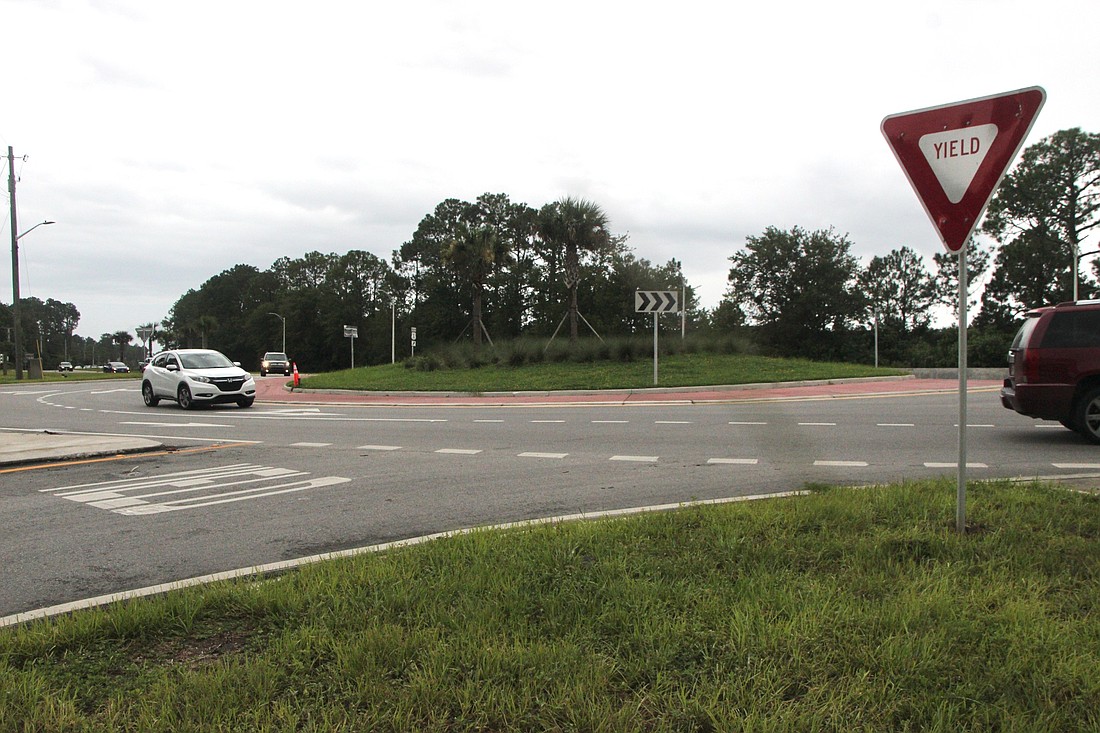- January 16, 2025
-
-
Loading

Loading

It’s been about a year since roundabouts were added at two Flagler County intersections on U.S. 1.
The change inspired outcry at the time from people who preferred a traditional stoplight and feared that roundabouts would be a nuisance to navigate or lead to more crashes, while Florida Department of Transportation staff reassured locals that roundabouts have a record of reducing fatalities.
Sheriff Rick Staly, before the roundabouts were created, had backed an initiative to add a stoplight at the U.S. 1/Old Dixie Highway intersection after a series of serious crashes there.
He’d said he’d defer to FDOT’s traffic engineers on whether a roundabout would ultimately be a better solution than a light, but had worried that the roundabout construction process would take too long and leave drivers at risk in the meantime, while adding a stoplight at the intersection — which then had only flashing lights — could be done quickly and reduce crashes.
But now that they’re installed, are Flagler’s roundabouts doing what they’re supposed to do?
“They have not necessarily had a significant impact on the number of crashes,” Staly said. “What FDOT had told me back during the discussion phase was that they knew that roundabouts were unlikely to reduce the number of crashes, but they felt their study showed it would reduce the severity of the crashes — and I guess that has come true.”
FDOT’s website states that roundabouts have “90% fewer fatalities and 75% fewer injuries” than regular intersections.
Since each Flagler County roundabout has only been open about a year — both opened last summer, and COVID-19 may have affected traffic during that time — it’s still early to draw conclusions.
But preliminary data has been encouraging: There have been no fatalities at either site so far this year, and there has also been no precipitous increase in fender-benders.
"It’s kind of been a mixed bag on the reduction or increase of vehicle crashes. But what DOT said would occur — that it would reduce fatal crashes — has panned out."
— RICK STALY, sheriff
The Old Dixie roundabout had two injury crashes in 2021 — neither a notable increase nor decrease from previous years — and three no-injury crashes, a decrease from 2019 and 2020.
The Matanzas location had 10 no-injury crashes (up from nine the year before) and one injury crash (a notable decrease from previous years).
The logic of roundabout safety is that when cars in roundabouts do crash into one another, they usually do so side-to-side while heading the same direction— eliminating the deadly head-on or T-bone crashes associated with regular four-way intersections.
Compared to the injury crashes that occurred before the two Flagler roundabouts were created, the injury crashes that have occurred since the roundabouts opened appear to be less severe, Staly said.
Staly had been skeptical that the roundabouts’ design would be able to slow traffic enough for cars to traverse the traffic circles safely. But they seem to be, he said.
At the Old Dixie one, he said, “I can tell you at least if you’re going northbound, you pretty much have to go 20 or 25 mph to get through. So despite my skepticism, they were able to slow down.”
That roundabout also has a faster-moving southbound bypass lane that lets traffic heading directly south avoid entering the roundabout itself.
Staly said he still sees concerning driving at the roundabouts.
“I see a number of near-misses — obviously the [crash] numbers don’t have the near-misses — because people still don’t entirely understand how to drive in a roundabout” he said. “They still drive from the inside lane and shoot across to the exit.”
But at 20-25 mph, drivers have time to react to their confused fellow roundabout navigators — and if they can’t, the collision damage tends to be minimal.
“Even though I was not a proponent of the roundabout solution, it does appear that what DOT has done, overall, has probably saved lives,” Staly said. “And I believe that will continue.”